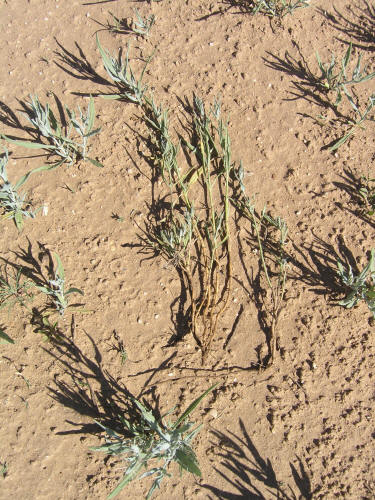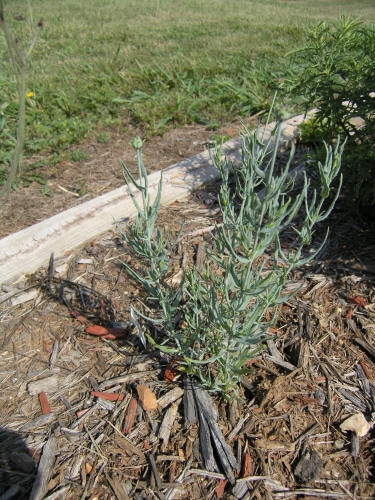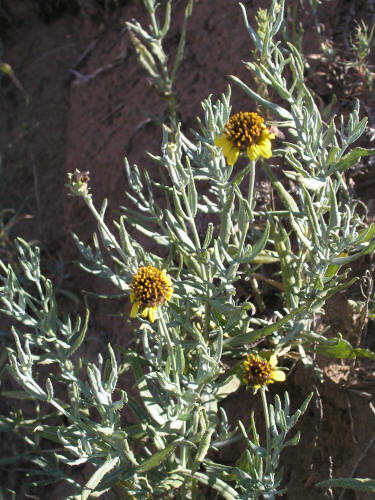Texas Blueweed
Texas Blueweed
Helianthus ciliaris D.C.
Asteraceae (Sunflower Family)

▲ young sprouts from creeping roots, with uprooted plant showing creeping roots in center
▲ closer view of creeping roots

▲ ▼ young plants emerging from creeping roots

▲ young plant before flowering

▲ ▼ mature flowering plants
▲ ▼ mature flowering plants
▲ inflorescence closer view, showing bud on lower left
▲ shoots after flowering, showing dried, dark brown persistent inflorescences
Helianthus ciliaris DC., Texas Blueweed: (Bayer Code: HELCI; US Code HECI)
- A U.S. native, creeping perennial with deep creeping roots that grows 6-24 inches tall; stems unbranched except in upper portions when flowering commences; stems and leaves blue-green to gray-green and are covered with short, stiff hairs
- Leaves are blue-green to gray-green, opposite, linear to lanceolate; leaf margins are smooth, or with a few teeth or outspread hairs; leaf margins often wavy
- Head inflorescences are 1-2 inches in diameter, produced at stem with 10-18 yellow ray florets (“petals") that are puckered at their bases, and 35 or more reddish-brown disk flowers that form a hemispherical shape in the center; flowers appear similar to a miniature marigold or sunflower
- Bracts below the inflorescence are in several rows, lanceolate or ovate with elongated, pointed tips that stand out from the base of the head
- Flowering from mid-summer through autumn
- Is quite invasive in reduced tillage row crops as well as being unpalatable to livestock;
can reproduce and spread rapidly, even in very dry conditions
- One of the few native sunflowers that is considered to be a serious weed
- Prefers dry, sandy infertile soils
(Updated January 21, 2021)